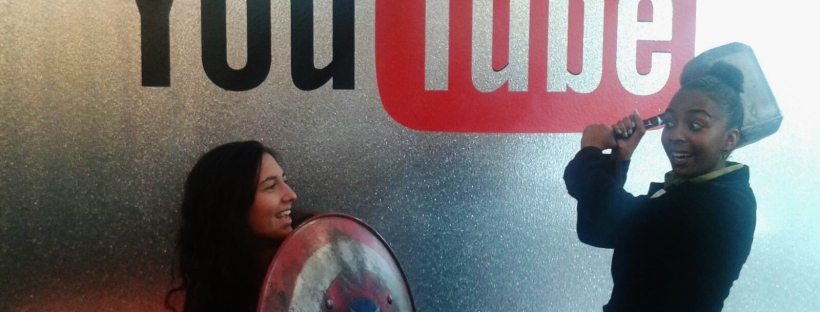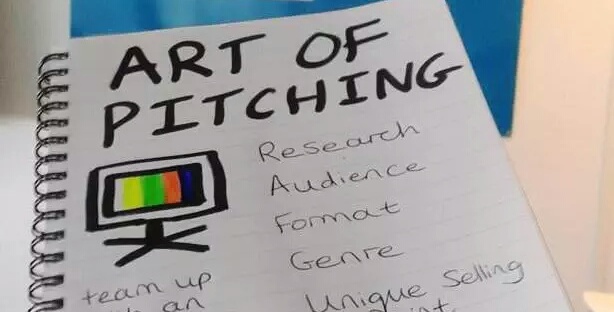You may be surprised to hear that 6 of the top 10 most influential digital people in the USA are YouTubers. Established in 2005, YouTube is now the world’s largest video-sharing website, with 1 billion unique users and 6 billion hours of content watched every month.
But how does an aspiring YouTuber go from zero to viral? The ultimate path to success can appear to be unclear. By applying a combination of these 10 key fundamentals in the videos you create, you are much more likely to build a channel that continues to grow. You could even become the next household name!
1. Shareability
If a video isn’t shareable, how will anyone find it? Rhett and Link, a famous YouTube duo that combines comedy with music, believe that if you can’t describe your video concept to a friend in 10 words, it probably isn’t worth pursuing. Why create something if you can’t think, or adequately describe, why it is a) relatable b) topical or c) valuable to an audience?
2. Conversational
If you can make it seem like you, the vlogger, are talking to the audience directly through the camera lense, it will give viewers a much more personable experience. Getting the audience to feel that they are your friend, or at the very least know who you are even if they’ve never met you, is a skill in itself.
3. Interactivity
The trick with YouTube is not only to get people to share your content, but also to keep coming back for more. One way of making the viewer experience more interactive is to invite your audience to engage with you, for example by leaving comments, questions or suggestions in the box below your videos to spark discussion and debate.
4. Consistency
Although YouTube is different to TV, having a regular uploading schedule is paramount for building and maintaining audiences. YouTube as a business relies on regular content uploads in order to maximise advertising revenues and to pay its active content producers. One example is Cooperative Photography (or COOPH) which has amassed over 300,000 subscribers due to its regular tips and how-to videos. If you can be consistent in your scheduling habits, on screen personality and format (the way you frame your shots, edit and brand your videos – The Fine Bros “Kids React” series is a good example) then you are on the right track.
5. Audience Awareness
Is there a clearly defined audience for your brand? Who is it that you want to reach out to in particular? It can be good to have videos with a wide appeal, but if thousands of others are creating similar content, it can be difficult to appear near the top of search boxes. Sometimes, having a niche but loyal following, that grows gradually over time, can be the recipe for success in the competitive and increasingly saturated world of YouTube. One good example is, Virat, a channel dedicated to exploring the science of music.
6. Sustainability
Starting a YouTube account is simple, but keeping it going in the long-term is not so easy. Comedy sketches for example, while entertaining and shareable, can take a lot of time and effort to produce and edit. They often involve sacrificing countless weekends alongside studying, working or whatever else life throws at us. Setting realistic goals and being patient are paramount to ensure you don’t burn yourself out. Most YouTube stars did not become over-night successes. They had to work hard to grow their fan base over a number of years. You should always try to produce things for the love of making them, not just in the hope that they go viral and you have your moment of fame. After all, who wants to be a one hit wonder if you can earn a reputation for consistently delivering high quality content?
7. Discoverability
Many aspiring YouTubers will ask themselves – how can my videos get found? The truth is that 40% of all video views come from searches. One way of getting your videos noticed is to publicise them on different social media platforms, particularly Twitter, when a story is current and “trending”. Creating content when something is newsworthy ensures your content is fresh and relevant to audiences. If they like what they see, they are likely to come back to see what else you’ve been up to. Then again, the weirder the story the better. Some videos, such as the “how to tie a tie” instructional video, are timeless and will do well no matter what the time of year!
8. Accessibility
Another issue to consider is whether every video can be appreciated by a brand new viewer. One way of eliminating this problem is to set a context for every new upload, for instance introducing yourself at the start of each video so that new users get a chance to understand your channel and its identity. Another good way of making your channel navigable is to give your channel website a good spruce. Upload a recent headshot and banner as well as links to your other social media pages/website so that people can follow your content on different platforms. Categorising videos into playlists (such as advice videos, diary entries and how-to tutorials) and using clear thumbnails to show what your content is about visually, help people to find the content that they want faster. You can also update your “about me” section and upload quick descriptions for each video, loaded with key words, for extra clarification. The easier you make the experience of searching through your content, the better the outcome will be for return visitors.
9. Collaboration
One of the best ways of ensuring your content reaches a wider audience is to work with other people. That way you can share audiences, and the interaction between YouTubers on camera often makes the video feel more sociable. Reach out to someone who has a similar number of subscribers to you. You may have some fantastic ideas for a beauty advice vlog, but it is unlikely that Zoella, who has over 7 million subscribers, is going to collaborate with you anytime soon unless you are best mates with her in the real world! Start small and aim big. Try and attend networking sessions or join a Facebook group for YouTube collaborations in your area. Although it is possible to collaborate with YouTubers overseas, it requires a great deal more of your time in order to co-ordinate Skype calls and arrange edits so finding someone who lives locally can be much more handy. Join together, and who knows you might make new friends you never would’ve had before!
10. Inspiration
When the going gets tough, always ask yourself the important question: “do I have a genuine passion for this?” If the answer is no and you’re just going through the motions of getting content out as quickly as you can without investing the time and effort needed to make good quality content that people want to re-watch and share, is it worth it to continue in the long-run? Probably not. Do you have the desire to inspire, educate and entertain people? You don’t have to be doing all 3 at once, but if you have a purpose for making content that you believe in, it will really help. Ultimately, there are no right or wrong answers when it comes to getting hits on YouTube, but the more research you do and the more time you invest in brainstorming and preparing ideas, the better your chances of success.
You may think that every video idea has been done before. While the site is inundated with new content every second, the good news is that YouTube is continuing to grow, particularly in the areas of gaming and music. With more and more brands getting involved with YouTubers to promote their products and services, there has never been a better time to monetise your ideas and talents.
So what are you waiting for? If you don’t give it a go you will never know what could come of it. Just pick up a camera, even if it’s just on a phone, and start practising and you can start working your way up to a Canon 600D (or other high quality DSLR camera of your choice).


